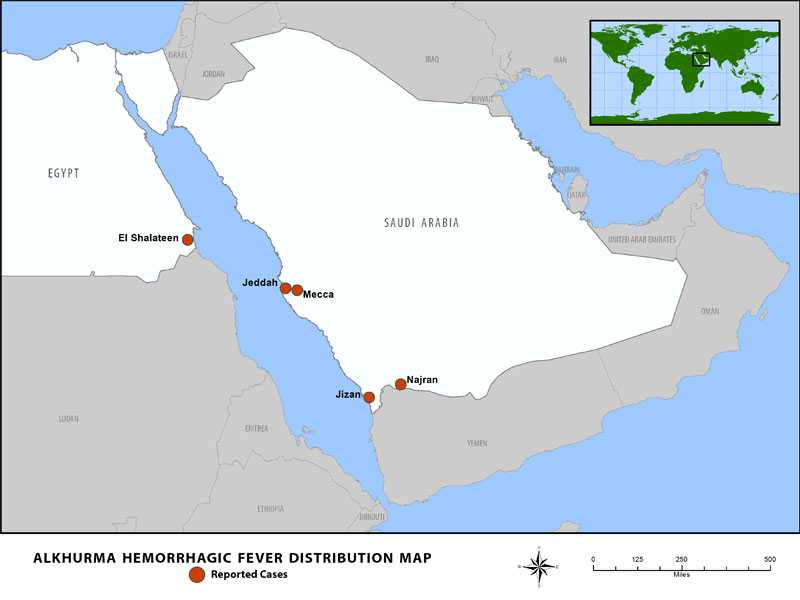Alkhurma hemorrhagic fever (AHF) is caused by Alkhurma hemorrhagic fever virus (AHFV), a tick-borne virus of the Flavivirus family. The virus was initially isolated in 1995 from a patient in Saudi Arabia. Subsequent cases of AHF have been documented in tourists in Egypt, extending the geographic range of the virus and suggesting that geographic distribution of the virus is wide and that infections due to AHFV are underreported.
The persistence of the virus within tick populations, and the role of livestock in the disease transmission process, are not well understood. The AHFV virus is a variant of Kyasanur Forest Disease (KFD), a tick-borne Flavivirus found in Karnataka State and environs in India.
Since the first description of AHFV, several hundred cases of AHF have been reported. Cases appear to peak in spring and summer. Further study of AHFV is needed to improve public health measures.

Resources
- Factsheet: Alkhurma Hemorrhagic Fever (AHF) [2 pages]
- Viral Hemorrhagic Fever (VHF) Information for Specific Groups
- References
- Page last reviewed: January 24, 2014
- Page last updated: January 24, 2014
- Content source:


 ShareCompartir
ShareCompartir
